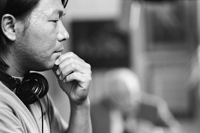 If history is written by the victors, then folklore is the testimony of the vanquished. When I was researching communist re-education camps and Vietnamese boat people to write Journey From The Fall, I met with these dilemmas: 1) The short chapter in American history books about the Vietnam War ends on April 30, 1975, the day American forces pulled out of Vietnam. Our story begins where the history books end. 2) I couldn’t find any images of the communist re-education camps and could collect only a handful of boat people images from rescue archives.
If history is written by the victors, then folklore is the testimony of the vanquished. When I was researching communist re-education camps and Vietnamese boat people to write Journey From The Fall, I met with these dilemmas: 1) The short chapter in American history books about the Vietnam War ends on April 30, 1975, the day American forces pulled out of Vietnam. Our story begins where the history books end. 2) I couldn’t find any images of the communist re-education camps and could collect only a handful of boat people images from rescue archives.
So was it all just folklore then – the incredible stories of survival that my friend Uyen tells me about how she fled Vietnam in a tiny fishing boat packed with nearly 100 people, that drifted for 22 days, how they were robbed by pirates several times, and how she witnessed a woman losing her sanity because she was raped repeatedly by pirates in every one of those encounters? Such stories are very common among Vietnamese immigrants, yet virtually non-existent for the rest of the world. Why is that so?
The answer became clear to me the first time I saw the black and white production stills taken by Carol Petersen (our production photographer) for Journey From The Fall. When I saw the stills of the Fall of Saigon scene I realized that the world does not know about the communist re-education camps and Vietnamese boat people because they’ve never seen images of them before. No one was there to document this journey that over two million Vietnamese were forced to take in the three decades since April 30, 1975.
By now, every one of the nearly one thousand communist re-education camps in Vietnam that once housed hundreds of thousands of political prisoners have been torn down, and all traces of their existence have been erased. Only a few refugee camps now remain in Southeast Asia, where nearly two million boat people once lived in transit while they waited to be sponsored by first-world nations such as America, Australia and Canada.
When one considers the Holocaust, if not for the breadth of the photographs and images that exposed the atrocities committed by the Nazis, who knows how much of that history would have been lost to time? Yet history was held and reclaimed for the Jewish community because someone was there to capture the reality of that inhumanity. The pain of a people can only be reconciled once the world has born witness to that pain. We have collected the personal accounts of re-education camp survivors and family memories about the boat people experience, and we know what it was like to grow up as refugee immigrants in the United States. These stories are part of the history that has made us who we are, a history too young to remember, but not too old to forget.